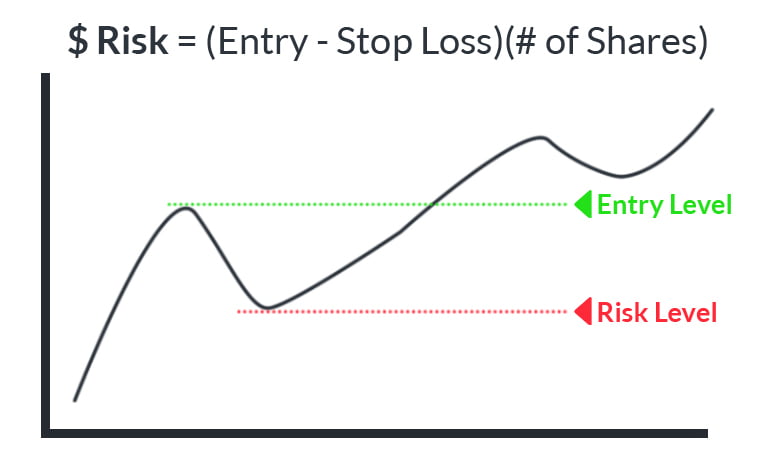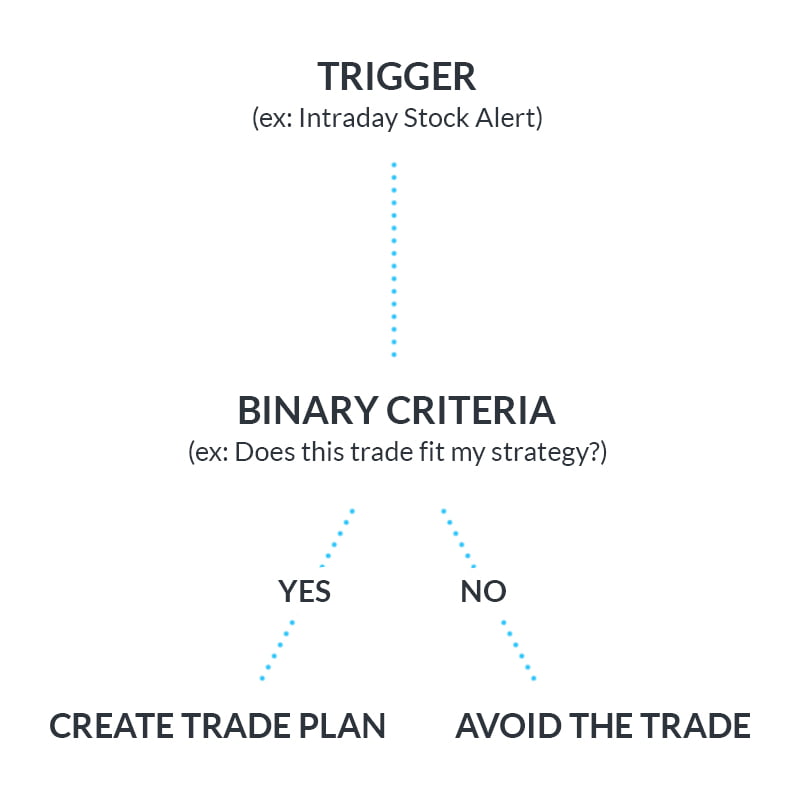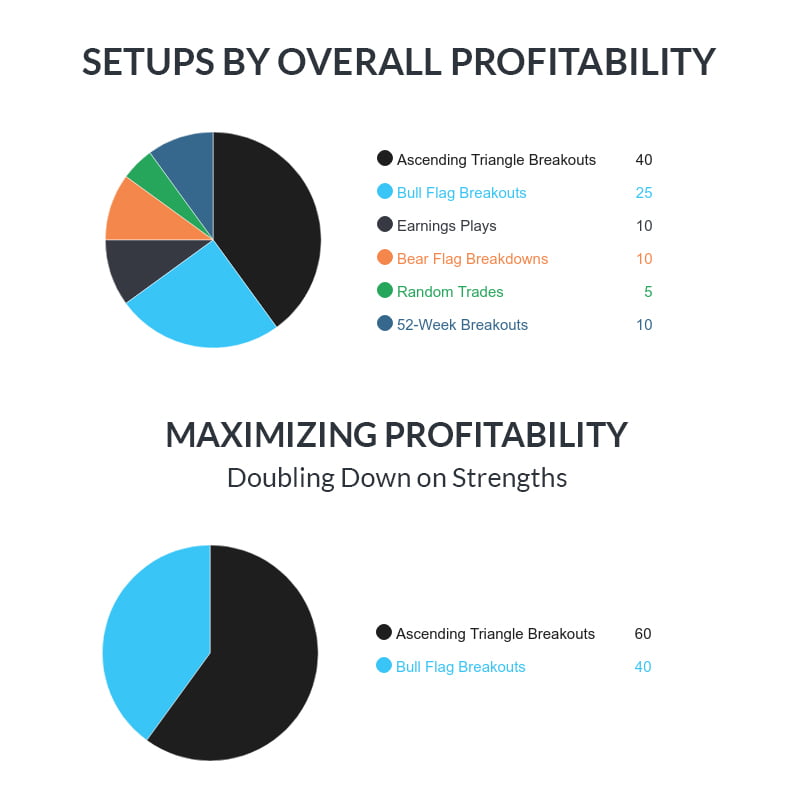Day traders are unique individuals. Similar to entrepreneurs, traders work obsessively to master their craft. We’ll stay up late, wake up early, and repeat the process the next day – all in efforts of living an extraordinary life that most can only dream of. There is a saying that, “Entrepreneurship means living a few years of your life like most people won’t so that you can spend the rest of your life like most people can’t.” The same is true for trading.
Thriving in the world of day trading requires ambition, hard work, and persistence. The road to day trading success is paved with blood, sweat, and tears (okay, maybe not blood). Whether you are just getting started or you’ve been on your journey for a while now, you’ve probably discovered that day trading is not easy. You’re putting your hard earned money on the line and facing new challenges daily. That said, every challenge you conquer takes you one step closer to your ultimate goal.
Small behavioral changes can have profound impacts. Your goal is to minimize losses and maximize profits in order to increase your net profitability.
Here are some tips:
1. Avoid Overtrading
Traders are ambitious, sometimes too much so. Many traders feel the need to always be doing something. It’s important to remember that trading requires patience, and the quality of your trades is far more important than the quantity.
The Pareto Principle states that, “80% of the effects come from 20% of the causes.” In trading terms, this would translate to, “80% of your profits will come from 20% of your trades.”
%
of your results come from 20% of your efforts
TAKE ACTION
Analyze your previous trades and zone in on the 20% that were the most profitable. Focus on why they were more profitable so you can better understand your strengths. Next, analyze the 80% of trades that were either less profitable or resulted in losses. Focus on why these trades didn’t work out as well as the others and adjust your strategy accordingly.
2. Avoid Under-trading
Do you ever find a great trade setup that you don’t take action on, only to look back later and realize your idea was spot on?
You’ll often hear traders and educators discuss the topic of overtrading, but few discuss the concept of under-trading. Under-trading can be attributed to a variety of factors, including lack of confidence and analysis paralysis. Simply put, traders find the right setups but fail to pull the trigger on their trades.
Keep in mind, there is a major difference between under-trading and avoiding setups you are uncomfortable with. The former is a psychological struggle while the latter is a logical decision.
TAKE ACTION
Next time you find yourself frozen behind the keyboard, focus on why you aren’t placing the trade. If you’re overanalyzing the setup, work on simplifying your approach. If you’re afraid of losing money, choose a stop loss and position size that allows you to risk a dollar amount that you are comfortable with.
3. Take Control of Your Losses
As traders, we’re always focused on profits. After all, the main goal of trading is to turn money into more money. It’s easy to get carried away and forget about the very real potential for losses. In reality, limiting losses has the same net effect as increasing profits. Learning how to manage risk is just as important as finding profitable setups.
The key with risk management is to have an airtight plan. If you say you’re going to stop out when the stock hits $5, stop out when the stock hits $5. If you’re not comfortable losing more than $300 on a trade, cut losses at $300.
TAKE ACTION
The first step towards limiting losses is choosing how much money you want to risk on a trade. You can’t control the stock market but you can control when you exit a position. Choose the maximum amount of money you want to risk and build your plan around it.
The second step of this plan is identifying a logical stop loss area. This may be a static area of support, a technical indicator (such as VWAP), etc. From there, you can take an appropriate position size that allows you to be fully in control of your risk. For example, if you’re stop loss is $0.50 below your entry and you don’t want to risk more than $100, you shouldn’t buy more than 200 shares of the stock.
4. Simplify Your Approach
There is an incredible amount of data available to traders in this digital millennium. This data is intended to improve our decision-making abilities, however it can also be overwhelming. As a trader, it’s your responsibility to create a simple strategy that is easy to execute. After all, a stock can only do one of two things: go up or go down. If you need to check ten different charts, reference ten different technical indicators, and flip on CNBC to see what Jim Cramer thinks of your trade, you are overcomplicating your trading process.
TAKE ACTION
Define your strategy. It can help to write it down on paper. What setups do you look for? What indicators do you use? How do you plan your exits? Write down everything you do before placing a trade and then review the list to see which behaviors actually help you make trading decisions. Differentiate between indicators you use for confirmation and indicators you use to make decisions. For example, if the RSI indicator doesn’t help you make better trading decisions, don’t waste time referencing it before every trade.
5. Trade Robotically
Note: MIT Degree not required.
As you begin to simplify your approach to trading, you can focus on making your strategy more robotic. The goal is to take all emotions out of trading so you can take a systematic approach to your trading. You make hundreds of decisions every day, most of them without much thought. This process is known as automaticity, and it allows humans to function efficiently.
For example, you generally don’t overthink your options when buying lunch. You know your budget and preferences and make a decision accordingly.
Emotions often arise during periods of indecision; this can be avoided with the proper planning.
TAKE ACTION
Trading robotically requires you to create binary criteria that help streamline your decision making process.
For example, if your trading strategy is buying 52-week breakouts on stocks under $10 with above average volume, you just have to ask yourself three questions before every trade. Is the stock breaking out above it’s 52-week high? Is the stock under $10? Is the stock trading on above average volume? If the answer to any of these questions is “no,” move on to the next trade.
The second step is trade management. You need to choose your entry price, profit target, stop loss, and position size. If you plan this before placing the trade, managing your position is effortless. For example, let’s say your entry is $15, your profit target is $18, your stop loss is $14, and your position size is 1000 shares. Your plan is simple – sell if the stock gets to $14 or $18 and hold your position for any price in between.
6. Learn Your Strengths and Weaknesses
Becoming a successful trader requires introspection, self-analysis, and evolution. Simply put, you need to analyze your own behavior and look for areas of improvement. Your goal is to increase behaviors defined as “strengths” and decrease behaviors defined as “weaknesses”. For example, if you are a great swing trader and mediocre day trader, you would shift your focus to swing trading.
Look at your win rate and levels of profitability. Here’s an example of how this may look:
- Day Trades 70%
- Long Trades 65%
- Morning Trades 60%
- Short Trades 30%
- Earnings Plays 20%
- Swing Trades 18%
TAKE ACTION
Analyze your trades (and trading behavior) and write down at least 5 strengths and 5 weaknesses. For example, your strengths may include intraday trades, biotech stocks, short selling, morning trading, and bear flag chart patterns. Your weaknesses may include swing trading, blue chip stocks, long trades, trading while distracted, and shorting breakouts too early.
Use these insights to modify your future trading behavior.
7. Double Down on What’s Working
Would you prefer to make $1000 on one trade or $100 on ten different trades? I think we’d all agree that making more money on a single trade is more favorable. Of course, this is easier said than done BUT it speaks to the ultimate goal (quality > quantity). Learn to double down on areas of strength. Focus your efforts to trading activity that yields the highest rewards.
TAKE ACTION
In the previous action step, you pinpointed your strengths and weaknesses. Now, it’s time to double down on your strengths. If you’re profitable 90% of the time when you short sell a daily bear flag pattern, it’s time to step on the gas. Shift your focus and your capital to the most profitable trading setups and ignore the rest. Repeat this process over time and you will have a highly efficient, laser-targeted trading strategy.
8. Don’t be Afraid to Go Back to Square One
If you find yourself in a rut, don’t hesitate to go back to basics. Markets are ever changing and new challenges are inevitable. If you’re not getting the results you want, hit the pause button.
Study your trades and look for where you went wrong. If something was working in the past but doesn’t work now, what changed? Are you missing any important pieces of information? Does your strategy have any holes?
Taking a step back from trading can seem counterproductive but it’s far more beneficial than blowing up your account.
What Are Your Favorite Trading Tips?
In the trading world, a simple piece of advice can be a game changer. We’ve all heard quotes, lessons, or tips that have elevated our trading to new levels. What’s the best trading tip you’ve ever received?
Share your best trading tips in the comment below!











